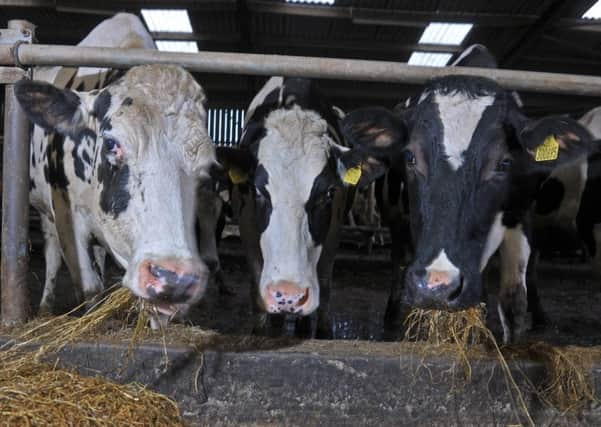Farms urgently need uplift from recovering dairy markets


Prices have strengthened with figures showing that as the markets continued to firm throughout June, wholesale prices have also been pushed up.
The bulk cream price increased 28 per cent between May and June while the estimated cream income to a liquid processor was up by 1.41 pence per litre (ppl) to 6.40ppl in June.
Advertisement
Hide AdAdvertisement
Hide AdBut while there has been a number of milk price increase announcements for July and August, prices do still remain far below sustainable levels because prices have fallen so significantly beneath covering production costs, said NFU dairy board chairman Michael Oakes.
“With the cream prices rising, we should be seeing milk prices improve across the board and in that respect it was disappointing to see Muller hold the milk price for August,” Mr Oakes said.
“There are clearly delays which just don’t make sense.
“Both AMPE (Actual Milk Price Equivalent) and MCVE (Milk for Cheese Value Equivalent), dairy market indicators, have recently increased, with AMPE up 12 per cent to 18.9ppl in June and MCVE up 19 per cent to 19.6ppl in the same month.
Advertisement
Hide AdAdvertisement
Hide Ad“With such leaps forward in those price indicators surely we should at least see some of the lower end cheese prices start to improve. Spot milk prices have also jumped from 16ppl in May to 25ppl in early July, yet we haven’t seen such a big lift in ‘B’ prices - these should theoretically be the first to react to market improvements.
“On liquid milk we need to make sure processors aren’t hiding behind retail premiums. Retailers have stuck by their word with minimum pricing on liquid milk, and in some cases on cheese, but these should not be used to hide real dairy market improvements.”
Signs of an upturn come as new figures show the UK’s dairy trade balance was continuing to improve.
The UK spent over £2bn on imported dairy goods in 2015, while generating just over £1bn in revenue from dairy exports - leaving the country with a negative trade balance of around £1bn, the AHDB Dairy figures show.
Advertisement
Hide AdAdvertisement
Hide AdHowever, in an update, AHDB warned that the trade balance could worsen later in the year, saying: “The good news is that the trade balance has been improving since 2013. However, it appears to be largely responding to increased product availability due to increased milk production. Given that milk production could fall in 2016, it could potentially turn more negative again this year.”
Expanion in milk production is already starting to slow down in Ireland, AHDB reports, as the market situation remains poor and Irish farmgate prices remain low.
Meanwhile, in Australia, food and drink firm, Lion, is trying to help its milk suppliers manage the volatile market by offering fixed and variable farmgate pricing options for between one and five years, allowing farmers to lock in prices for up to 50 per cent of milk volumes.